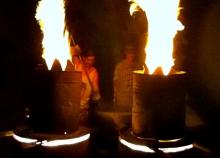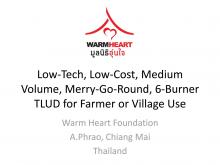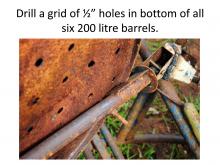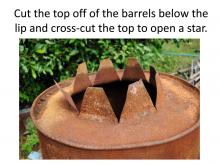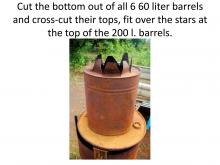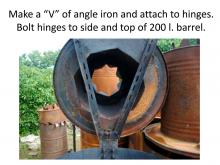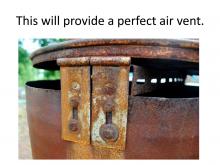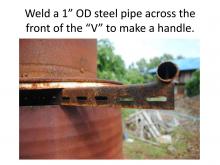This presentation was put together by A.Phrao, Chiang Mai of the Warm Heart Foundation in Thailand. They are using biochar to attempt to restore fertility to badly degraded mountain soils, and to intensely fertilized mono-cropped soils that have low fertility.
They designed this medium sized TLUD system with the following constraints:
They wanted to design a simple, low-cost biochar burner that:
- Can be built from locally available materials, preferably recyclables, at little cost;
- Can be manufactured by local mechanics without
- training;
- Can be operated safely and efficiently by a single person;
- Can use a variety of feed stocks, preferably field waste;
- Can produce a minimum of 1 ton of biochar per week under normal, unpressured operating conditions.
The solution is pretty ingenious - please take a look at the PDF for all of the details.
The following is quoted from the pdf:
The 6-burner TLUD merry-go-round:
materials list
- • 1 x children’s playground merry-go-round or equivalent
- • 6 x 200 litre steel drums
- • 6 x 60 litre steel drums
- • 8 x meters 1” OD steel pipe
- • 6 x meters 1” angle iron
- • 6 x 3” hinges
- • Miscellaneous nuts and bolts, welding rods, grinding wheels
- • Circular grinder, arc welder
System
- • 6 TLUD burners
- • 55 kg corn cob load/barrel
- • 20+ kg biochar output/barrel
- • 120 kg per burn
- • Single man can load, light, rotate, load, light, rotate…empty, extinguish, empty, extinguish… all six loads in 1.5 hrs.
- • Single man can grind full load in 1.5 hrs.
- • Two full loads per day = 240 kg/day
- • 6 day week = 1,440 kg/wk
- • Feed stock requirement = 3,600 kg/wk
- • Cost: corn cob @ 700 baht/ton ($23.35) or $60/ton biochar if farmer does not have own supply

